PUNICA
Punica
L., Sp. Pl. 472. 1753; Gen. Pl. ed. 5. 212. 1754; Boiss., Fl. Or. 2: 736. 1872; Clarke in Hook. f., Fl. Brit. Ind. 2: 580.1879; Parker, For. Fl. Punj. 254. 1924; Fl. Pak. @ eFloras org p.1; Haining & Graham, Fl. China @ eFloras.org 13: 283. 2007.
Small trees or shrubs, sometimes spiny. Leaves opposite, simple, exstipulate. Flowers showy, solitary, axillary or terminal or 2-5 in axillary or terminal clusters, bisexual, actinomorphic, 5-7-merous, epigynous. Calyx campanulate, adnate below into calyx-tube (hypanthium), thick and coriaceous, lobed at the top, valvate, persistent. Petals free, imbricate, strongly crumpled. Stamens numerous, covering inner surface of calyx-tube from rim to ovary, persistent. Ovary inferior, adnate to base of calyx-tube, multilocular, loculi in 2 layers; placentation axile in the lower and parietal in the upper loculi; style simple, exserted; stigma capitate. Fruit baccacous, crowned with lobed of calyx, rind leathery. Seeds numerous, pulpy and juicy.
2 species
Punica granatum
Punica granatum
L., Sp. Pl. 472. 1753; Boiss., Fl. Or. 2: 736. 1872; Clarke in Hook. f., Fl. Brit. Ind. 2: 581.1879; Aitch., Jour. Linn. Soc. 18: 59. 1880; Talbot, For. Fl. 68. 1911; Bailey, Stand. Cycl. Hort. 4: 2861. 1917; Parker, For. Fl. Punj. 253. 1918 (Reprint 1973); Stewart, Ann. Cat. Vasc. Pl. W. Pak. and Kash. 501. 1972; Fl. China @ eFloras.org. 13: 283; Fl. Pak. @ eFloras org p.1; Punica nana L., Sp. Pl. ed. 2. 1: 676. 1762.
Large, deciduous shrub or small tree, 2.5 m tall, smooth, gray, thin; often armed with small axillary or terminal thorns; young branches 4-angled. Leaves opposite, simple, exstipulate; petiole 5-10 mm, leaf-blade 2-8 cm x 1-3 cm, oblong-lanceolate, oblong-oblanceolate or oblong- elliptic, adaxially shiny; base attenuate, apex obtuse or mucronate, margin entire. Flowers 3.5-5 cm long and as much as across, mostly solitary, sometimes 2-5 in cluster, terminating short shoots, sometimes apparently axillary, sessile or nearly so; bisexual, actinomorphic, 5-7-merous. Calyx campanulate, red-orange; calyx tube (Hypanthium) ca. 2.8 cm x 1.3-1.4, adnate to and produced beyond the ovary, coriaceous, lobes 5-7, ca. 10 mm x 6 mm, triangular. Petals 5-7, obovate, 1.5-3 cm x 1-2 cm, apex rounded or obtuse, scarlet or orange, most crumpled, inserted at hypanthium rim between the calyx lobes. Stamens very numerous, inserted at the throat of calyx between the petals at various levels, included or exserted, multiseriate, persistent; filaments 6-7 mm long; anthers 1 mm long, elliptic, dehiscing longitudinally. Carpels many, syncarpous; ovary inferior, adnate at the base of hypanthium, multilocular (8-13) in 2 (or 3) superposed layers, loculi many-ovuled, lower loculi (usually 3) with axile placentation, upper ones (5-9) with parietal placentation; style ca. 1 cm long, thick, bent; stigma capitate. Fruit baccacous, 5-12 cm in diameter, globose, tipped with calyx-limb and persistent stamens, rind coriaceous, woody, the interior septate with membranous walls of the carpels, each carpel containing numerous seeds. Seeds numerous, obpyramidal with a watery outer coat (sarcotesta) containing pink juice and a horny inner coat.
Common Names: Pomegranate; Anar (Hindi, Punjabi)
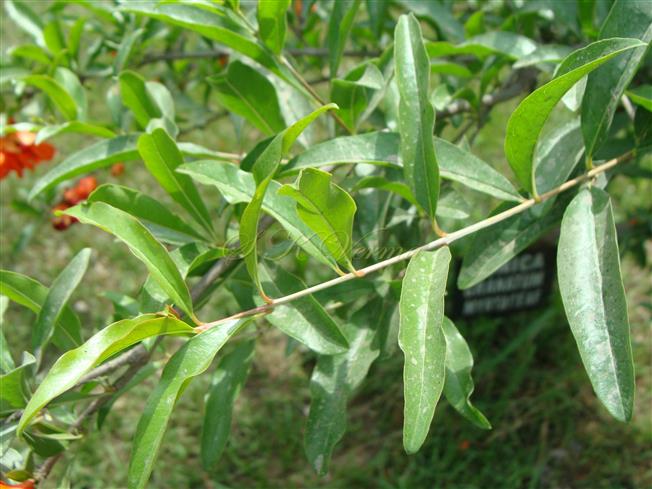
-DSC00063.jpg)
-DSC00064.jpg)
-DSC06556.jpg)
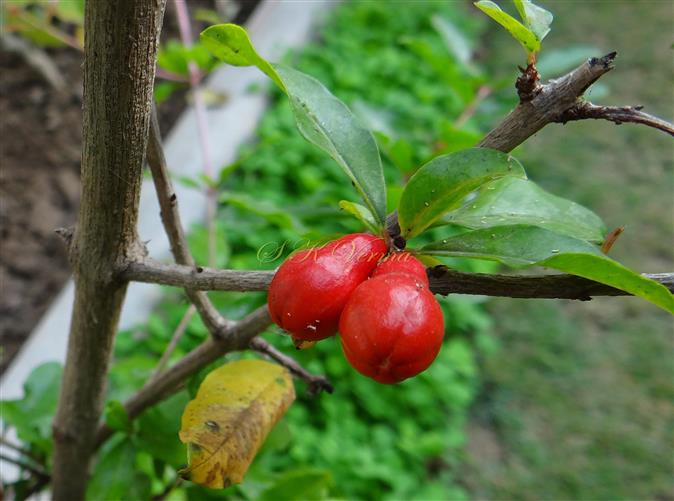
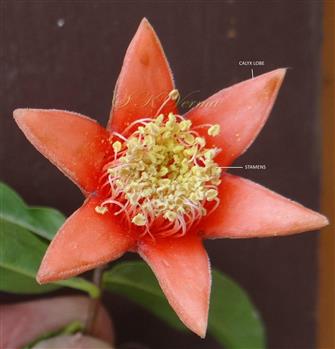
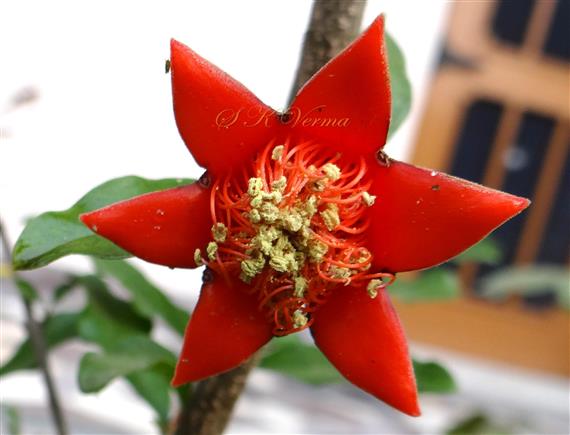
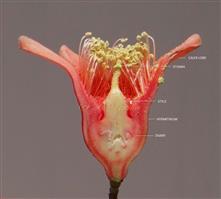
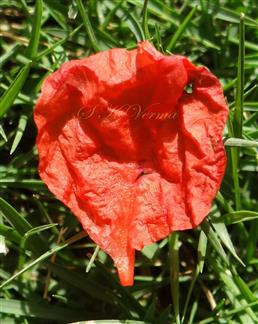
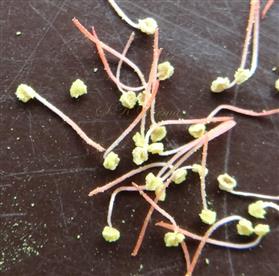
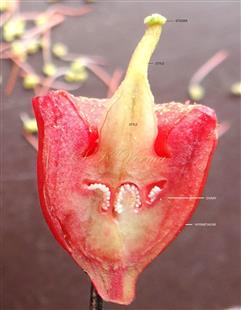
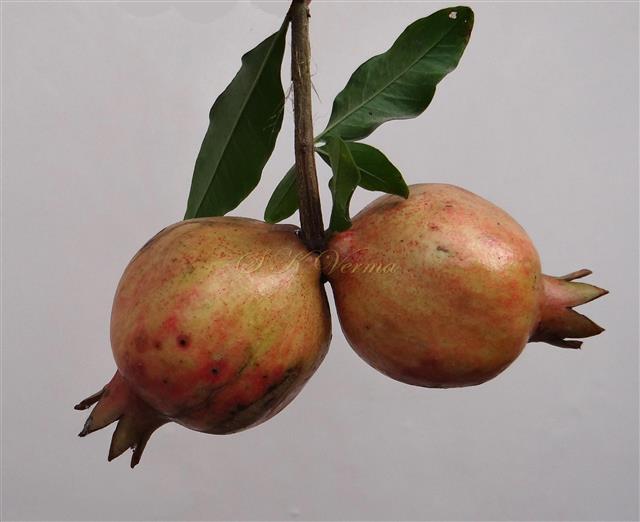


-DSC00063.jpg)
-DSC00064.jpg)
-DSC06556.jpg)







